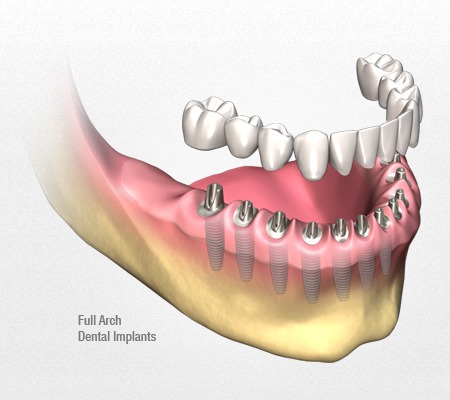Multiple Implants
Multiple implants refer to the placement of several dental implants to support the restoration of multiple missing teeth. Dental implants are artificial tooth roots made of biocompatible materials, such as titanium, that are surgically placed into the jawbone. They provide a strong foundation for various dental prosthetics, including crowns, bridges, or dentures.

About Multiple implants
Technique
- Technique: Initial Assessment: The process begins with a thorough oral examination and evaluation. The dentist or oral surgeon will assess the condition of the patient’s teeth, gums, and jawbone to determine the suitability of multiple dental implants.
- Treatment Plan: After the assessment, a treatment plan is created based on the patient’s specific needs and goals. The treatment plan outlines the number of implants required and their placement locations.
- Implant Placement: Dental implants are surgically placed into the jawbone. The number of implants depends on the number of missing teeth and the type of restoration (crown, bridge, or denture) to be attached.
- Osseointegration: Over a period of several months, the implants fuse with the jawbone through a process called osseointegration, which provides a strong and stable foundation for the prosthetic teeth.
- Abutment Placement: After osseointegration is complete, abutments (connector pieces) are attached to the implants. These abutments serve as anchors for the prosthetic teeth.
- Prosthetic Attachment: The prosthetic teeth (crowns, bridges, or dentures) are attached to the abutments. The prosthetic is custom-made to match the patient’s natural teeth in color, shape, and size.
Benefits
- Restoration of Function: Multiple dental implants allow for the restoration of chewing and speaking abilities, similar to natural teeth.
- Aesthetics: Implants provide a natural and esthetically pleasing appearance, enhancing the patient’s smile.
- Durability: Dental implants are long-lasting and can provide a permanent solution for multiple missing teeth.
- Preservation of Jawbone: Implants help prevent bone loss in the jaw, which can occur after tooth loss.
- Stability: Implants are stable and do not rely on adjacent teeth for support, unlike traditional dental bridges.
- Improved Oral Health: Implants do not require altering adjacent teeth for support, preserving the overall oral health.
Frequently Asked Questions
Q. How much it will Cost?
A. Variable.
Q. 1 Are multiple dental implants painful?
A. Discomfort is typically minimal during the implant placement procedure, and any post-surgery pain can be managed with pain relievers.
Q. How long does the entire process take?
A. The timeline varies, but it can take several months from implant placement to final restoration, primarily due to the healing and osseointegration process.
Having some trouble with your teeth?
Schedule an Appointment
Dantspa Helpline
For location and more contact information click here

